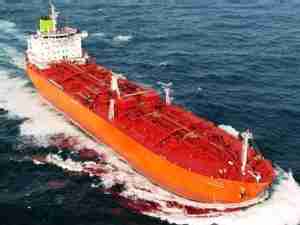Chinese shipbuilding declines, South Korea and Japan on the rise comment from IHS Maritime
posted by AJOT | Jul 28 2013 at 08:00 PM | Maritime
“Over the past 12 months, orders have fallen dramatically in the Chinese shipbuilding industry, despite being a previous hotspot. COSCO, one of the country’s largest shipping companies, has suffered huge losses in the past year and is unlikely to continue ordering as many ships as before.”
Factors Affecting Decline: Manufacturing Slowdown, Contract Problems, Infrastructure Improvements
“Factors affecting the decline of shipbuilding in China are many. Some are pegged to market forces and others to policy. For example, as Chinese manufacturing slows down, so do orders for container vessels from companies like COSCO. In the past few years China has been adding to the global container oversupply by taking on large orders, even when there was a clear slowing down in the sector. About 576,000teu worth of capacity has been ordered for delivery in 2013, twice as much as in 2012, with Germany (163,000teu) and China (140,000teu) contributing the largest orders.
Many foreign ship owners are now wary of ordering ships in China as a result of contractual problems, such as late delivery, as was experienced during the boom years of 2006–09. The number of bulk and ore carriers is declining, largely as a result of coal imports reaching a plateau in 2012 and a changing energy policy. With improved internal railway networks, it has become much easier to transport coal by train from the producing provinces to the coastal regions where they are needed than it is to ship them. A high pollution level from using coal power has forced the government to cap the role of coal in the power mix, leading to decrease in overall demand.
Orders for bulk carriers reached a peak in 2012 with 625 ships, up from 66 in 2006, and currently stand at 570 for 2013. It is highly unlikely that the age of cheap bulk carrier manufacturing will return in Chinese yards. Similarly, over-stockpiling of iron ore has left ships berthed for up to a month with nowhere to unload their cargo. Ship owners and operating firms have resisted the proposal by some industry officials in China to bring forward early scrapping of old ships as a mitigation strategy. A sizable chunk of China’s fleet, many not properly recorded on ship registers, are much older than their intended service life.
South Korea and Japan on the rise
China is also losing its competitiveness to its neighbours South Korea and Japan. Increasingly, the deal breaker for ship owners is the lack of advanced designs, which forces them to turn to South Korea as emission restrictions are being imposed. The move from building many fast container ships has shifted to building larger, slower, and more fuel-efficient ones. In contrast, the advantage for Japan is the depreciating yen, which has increased its competitiveness. Japanese yards are also moving towards offshore vessels and platforms, which the local industries hope will tide them over the down period.”










